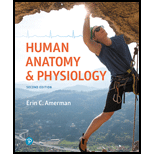
Concept explainers
First, write the Roman numeral that corresponds to each named cranial nerve (after the abbreviation CN). Second, match the cranial nerve with its correct function from the column on the right.
CN _________
_________Vestibulocochlear nerve
CN _________
_________Trigeminal nerve
CN _________
_________Hypoglossal nerve
CN _________
_________Abducens nerve
CN _________
___________Vagus nerve
CN _________
__________Olfactory nerve
CN _________
__________Accessory nerve
CN _________
__________Oculomotor nerve
CN _________
__________Facial nerve
CN _________
__________Optic nerve
CN _________
___________Glossopharyngeal nerve
CN _________
____________Trochlear nerve
Motor to the lateral rectus muscle
Motor to the muscles of facial expression; lacrimation; salivation; taste to the anterior two-thirds of the tongue
Sense of smell
Motor to the muscles for swallowing; salivation; taste to the posterior one-third of the tongue; somatic sensation from the throat
Senses of hearing and equilibrium
Motor to the superior oblique muscle
Motor to the tongue
Motor to the sternocleidomastoid and trapezius muscles
Sense of vision
Motor to muscles of swallowing and speaking; parasympathetic innervation to thoracic and abdominal viscera; sense of taste from the throat
Sensory to the face; motor to the muscles of mastication
Motor to four of six extrinsic eye muscles; constricts the pupil; changes the shape of the lens; opens the eyelid
Want to see the full answer?
Check out a sample textbook solution
Chapter 13 Solutions
Pearson eText Human Anatomy & Physiology -- Instant Access (Pearson+)
- What are some external influences that keep people from making healthy eating decisions?arrow_forwardWhat type of structure(s) would you expect to see in peripheral membrane proteins? (mark all that apply) A. Amphipathic alpha helix (one side is hydrophilic and one side is hydrophobic) B. A hydrophobic beta barrel C. A hydrophobic alpha helix D. A chemical group attached to the protein that can anchor it to the membranearrow_forwardTemporal flexibility (the ability to change over time) of actin structures within a cell is maintained by… A. The growth/shrinkage cycle B. Periodic catastrophe C. GTP hydrolysis D. Treadmilling E. None of the abovearrow_forward
- During in vitro polymerization of actin and microtubule filaments from their subunits, what causes the initial delay in filament growth? A.Nucleation B.Reaching homeostasis C.Nucleotide exchange D.ATP or GTP hydrolysis E.Treadmillingarrow_forwardYou expect to find which of the following in the Microtubule Organizing Center (MTOC)...(mark all that apply) A. Gamma tubulin B. XMAP215 C. Centrioles D. Kinesin-13arrow_forwardThe actin-nucleating protein formin has flexible “arms” containing binding sites that help recruit subunits in order to enhance microfilament polymerization. What protein binds these sites? A.Thymosin B.Profilin C.Cofilin D.Actin E.Tropomodulinarrow_forward
- While investigating an unidentified motor protein, you discover that it has two heads that bind to actin. Based on this information, you could confidently determine that it is NOT... (mark all that apply) A. A myosin I motor B. A dynein motor C. A myosin VI motor D. A kinesin motorarrow_forwardYou isolate the plasma membrane of cells and find that . . . A. it contains regions with different lipid compositions B. it has different lipid types on the outer and cytosolic leaflets of the membrane C. neither are possible D. A and B both occurarrow_forwardYou are studying the mobility of a transmembrane protein that contains extracellular domains, one transmembrane domain, and a large cytosolic domain. Under normal conditions, this protein is confined to a particular region of the membrane due to the cortical actin cytoskeletal network. Which of the following changes is most likely to increase mobility of this protein beyond the normal restricted region of the membrane? A. Increased temperature B. Protease cleavage of the extracellular domain of the protein C. Binding to a free-floating extracellular ligand, such as a hormone D. Protease cleavage of the cytosolic domain of the protein E. Aggregation of the protein with other transmembrane proteinsarrow_forward
- Topic: Benthic invertebrates as an indicator species for climate change, mapping changes in ecosystems (Historical Analysis & GIS) What objects or events has the team chosen to analyze? How does your team wish to delineate the domain or scale in which these objects or events operate? How does that limited domain facilitate a more feasible research project? What is your understanding of their relationships to other objects and events? Are you excluding other things from consideration which may influence the phenomena you seek to understand? Examples of such exclusions might include certain air-born pollutants; a general class of water bodies near Ottawa, or measurements recorded at other months of the year; interview participants from other organizations that are involved in the development of your central topic or issue. In what ways do your research questions follow as the most appropriate and/or most practical questions (given the circumstances) to pursue to better understand…arrow_forwardThe Esp gene encodes a protein that alters the structure of the insulin receptor on osteoblasts and interferes with the binding of insulin to the receptor. A researcher created a group of osteoblasts with an Esp mutation that prevented the production of a functional Esp product (mutant). The researcher then exposed the mutant strain and a normal strain that expresses Esp to glucose and compared the levels of insulin in the blood near the osteoblasts (Figure 2). Which of the following claims is most consistent with the data shown in Figure 2 ? A Esp expression is necessary to prevent the overproduction of insulin. B Esp protein does not regulate blood-sarrow_forwardPredict the per capita rate of change (r) for a population of ruil trees in the presence of the novel symbiont when the soil moisture is 29%. The formula I am given is y= -0.00012x^2 + 0.0088x -0.1372. Do I use this formula and plug in 29 for each x variable?arrow_forward
 Medical Terminology for Health Professions, Spira...Health & NutritionISBN:9781305634350Author:Ann Ehrlich, Carol L. Schroeder, Laura Ehrlich, Katrina A. SchroederPublisher:Cengage Learning
Medical Terminology for Health Professions, Spira...Health & NutritionISBN:9781305634350Author:Ann Ehrlich, Carol L. Schroeder, Laura Ehrlich, Katrina A. SchroederPublisher:Cengage Learning





